"L'architecture est l'un des plus urgents besoins de l'homme"1, opined Le Corbusier in his 1923 book, Vers une architecture, 'Architecture is one of the most urgent needs of man'.
An urgent need that, to paraphrase, summarise, Vers une architecture, was in urgent need of renewal. Was in urgent need of a new direction in context of the technological, material, ecological, economic, et al realities of the early 1920s; that there was, on account of the realities of the age, an urgent need for a novel direction Vers une architecture, Towards an Architecture, relevant, meaningful, responsive to and for the age.
And a century later?
With Vers une architecture: Reflections Pavillon Le Corbusier, Zürich, present Reflections on Vers une architecture by contemporary creatives and thereby enable not only access to a differentiated reading of the work a century after its publication, but also a differentiated viewing of contemporary architecture, and the needs of the society in which that architecture arises, exists, and of the human species who rely on it.....
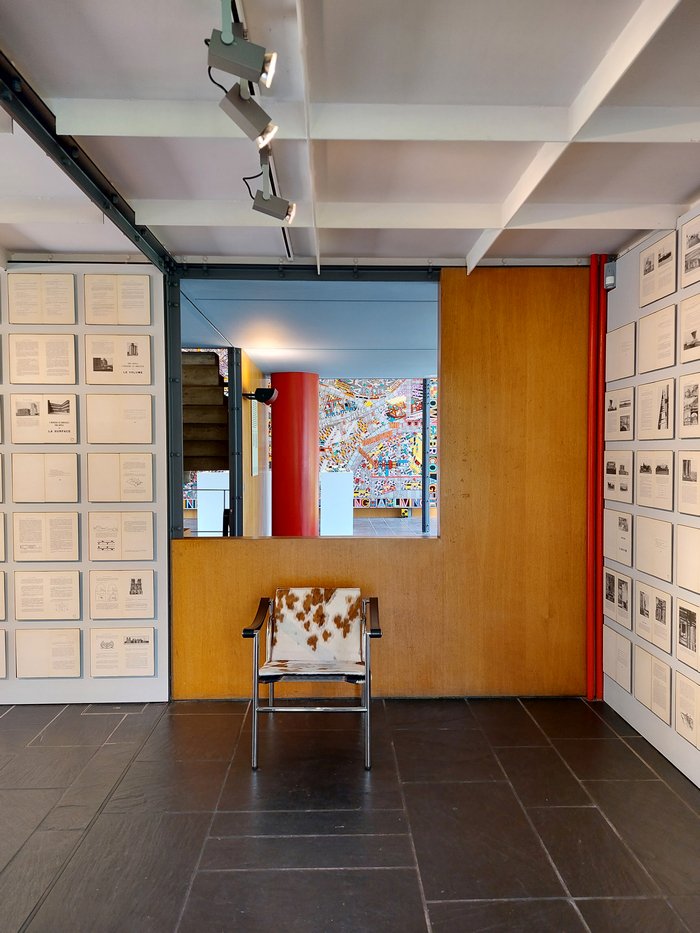
Specifically Vers une architecture: Reflections presents 8 Reflections on Vers une architecture. A number that itself is a... reflection... an echo of, ¿off?, the 8, technically 7, essays, reflections, in Vers une architecture.
Opening with Back to the Future by Vers une architecture: Reflections curators Beatriz Colomina and Mark Wigley, an opening that is less the Arguments with which Le Corbusier opens Vers une architecture, and more general reflections on Vers une architecture, a, if one so will, scene setting. A scene setting that includes an elucidation of the number of languages into which Vers une architecture has been translated over the century of its existence, and which thereby provides an impression, one could argue a demonstration, of the importance of not only the work on global architectural theory and practice since its original publication, but the importance of Le Corbusier, explains a reason for the ongoing importance of Le Corbusier, on global architectural theory and practice.
And an opening essay, reflection, that also provides an introduction to the multifaceted arts and culture magazine L'Esprit Nouveau in which the essays/reflections that form Vers une architecture originally appeared. A L'Esprit Nouveau that, as previously discussed in these dispatches in context of the Radio smow Le Corbusier playlist, the, then, Charles-Édouard Jeanneret-Gris established in 1920 with his, then, before it all exploded somewhat, very, spectacularly, close collaborator, Amedeé Ozenfant. A founding of L'Esprit Nouveau in 1920 that coincides with the birth of Le Corbusier as a Nom-de-Plume, Nom-de-Guerre: the sobriquet first appearing in the first edition of L'Esprit Nouveau in October 1920. And an Amedeé Ozenfant who must be considered as co-author of Vers une architecture: the essays/reflections that form Vers une architecture originally appearing under the by-line "Le Corbusier-Saugnier", the latter being Ozenfant's chosen Nom-de-Plume, Nom-de-Guerre.
An Ozenfant essentially absent from Reflections. An absence reflective of the fact that a Le Corbusier would never admit that Ozenfant played a role in the texts, far less in the ideas and positions at their core. Texts, ideas and positions that today as Vers une architecture form the basis of the popular appreciation of the architect Le Corbusier. Arguably the basis of the popular fame of Le Corbusier, Architect.
Texts in L'Esprit Nouveau that became Vers une architecture that form the basis of the project Words by Zürich based designer Christine Gertsch and architects Romina Grillo and Liviu Vasiu a.k.a. grillovasiu, which, as the title implies, reduces Vers une architecture to the individual Words: seeking out repetitions and patterns and conceits and subsequently presenting Vers une architecture not as the as essays/reflections it is but as a list of words quantitated according to their relevance to the text, to the positions and arguments therein. Words in isolation to be read, studied, reflected upon, from the comfort of an LC 4 chaise-longue by Le Corbusier, Pierre Jeanneret and Charlotte Perriand.
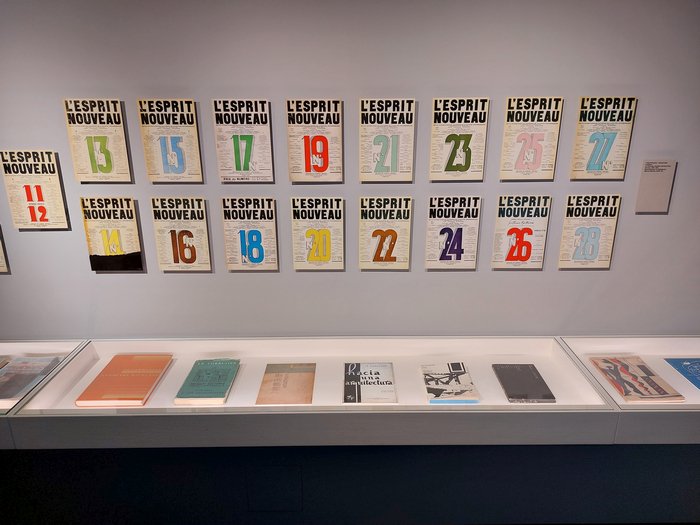
A reduction of the physical familiar to the unseen raw data it is composed of in many regards continued by Netherlands based triumvirate Paul Cournet, Negar Sanaan Bensi and Paul Swagerman in their project Datapolis with its photos of data infrastructure and automation in the contemporary Netherlands.
Images that in the attraction and fascination of their emotionless functionality and inherent geometry remind very much of the grain silos with which Le Corbusier illustrated Vers une architecture, and which numerous of his ilk also employed in the early 20th century, to elucidate the deficits in contemporary architecture through a comparison with the work of engineers who, although, "ne poursuivant pas une idée architecturale, mais simplement guidés par les effets du calcul (dérivés des principes qui gèrent notre univers) et la conception d'UN ORGANE VIABLE ... [provoquer] en nous des émotions architecturales, faisant ainsi résonner l'œuvre humaine avec l'ordre universel", 'not pursuing an architectural idea, but simply guided by the effects of calculation (derived from the principles that govern our universe) and the design of A VIABLE ORGAN ... [provoke] architectural emotions in us, thus making the human work resonate with the universal order'.
Images of data infrastructure and automation that not only pose questions of our contemporary "l'ordre universel" and the "principes qui gèrent notre univers" but also of the function of architecture in the coming future, the architecture we should be heading vers in an automated, networked future, of human society's need for architecture in the future. And also of the role of humans in future society, of the need for humans in future society.
Thereby echoing, and allowing for reflections on, Le Corbusier's argument in Vers une architecture that "L'outillage humain était toujours dans la main de l'homme: aujourd'hui, totalement renouvelé et formidable, il échappe momentanément à notre étreinte", 'Human tools were always in the hands of man: today, totally renewed and formidable, they momentarily escape our grasp.'
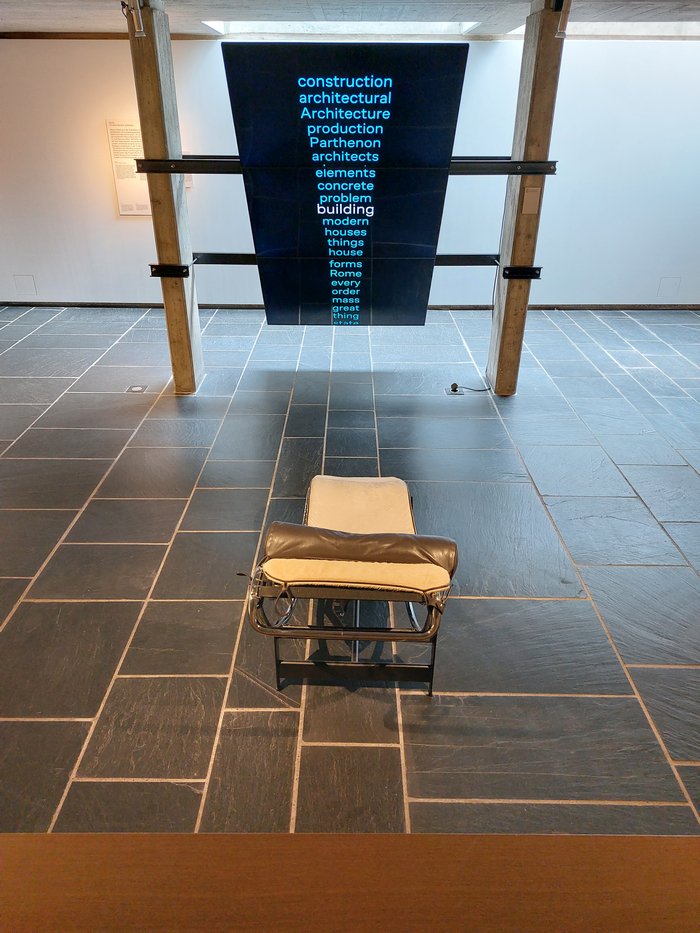
Thoughts also very much raised, approached, admonished one takes seriously, in Après une Architecture by 'Jean Jacques Balzac'. A title that not only re-phrases, re-frames, Vers une architecture, but which echoes the 1918 book Après le Cubisme by Le Corbusier and Amedeé Ozenfant; that work from a period when Le Corbusier could admit to Ozenfant's presence and contribution.
And a 'Jean Jacques Balzac' 'who' is every bit as unreal, as fake, as imagined while being every bit as existent, as palpable, as the architecture and interiors 'he' realises.
Works 'by' 'Jean Jacques Balzac' produced from the fusion and reworking of images freely available online with the aid of AI to create non-existent but existable, viable, relatable, architecture and interiors that stand very much as a warning of the ease with which the human species can be tricked on account of our long standing belief that a photo tells the truth, the whole truth and nothing but the truth. Although they never have. Never will. Our utter inability, despite over a century of practice, to read a photo. An inability that in contemporary contexts is a genuine vulnerability, a liability.
Believable non-existent interior and exterior architecture that also provide a taster of one of the more important roles AI will, inevitably, play in defining the future of our built environment and interior spaces: creating images of interiors and exteriors which in the echo chambers of social media will instantly become desirable amongst a critical mass, thereby becoming urgently necessary, "l'un des plus urgents besoins". And which, as good fortune would have it, some company or other is excellently placed to provide. As they are the next t**** that AI and the iniquitous Influencer industry unite to propagate.
When Le Corbusier opines, warns, in Vers une architecture "Les 'styles' sont un mensonge", '“Styles” are a lie', he may have been employing a different definition of "style", but the statement was rarely so apposite.
Or so urgent.
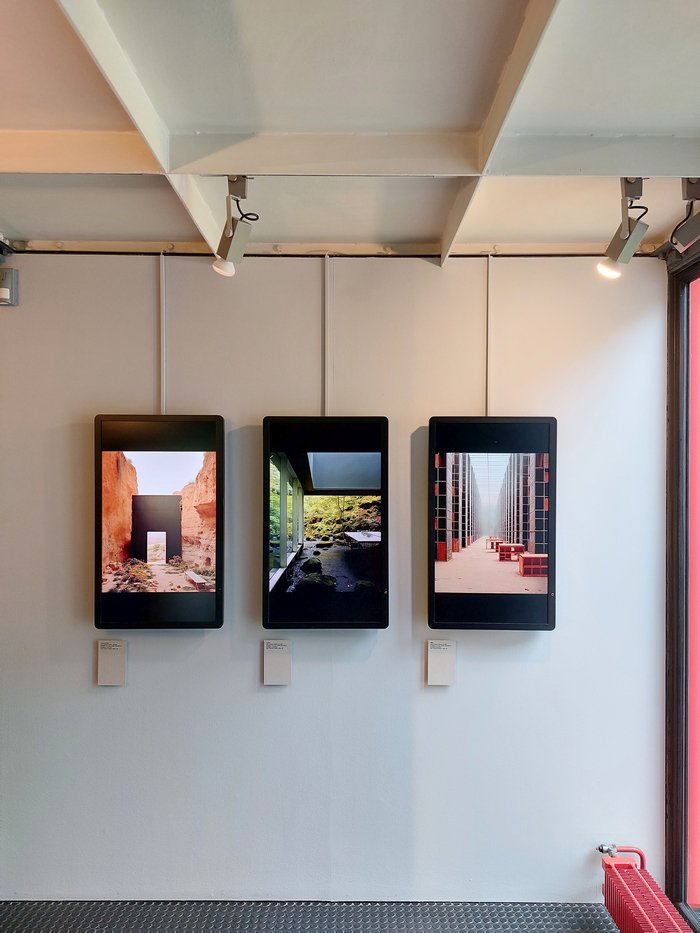
Future architecture as being (invariably) based primarily on AI visuals and their sheep-esque approval by appointed, and anointed, and well paid, gatekeepers, with the subsequent adoption by the masses, and reflections on "Les 'styles' sont un mensonge", that is also an admonishment to reflect upon the path architecture has taken since Vers une architecture was published. Not least in context of the path taken by the architecture realised by Le Corbusier.
A reflection Vers une architecture, when unwittingly, unknowingly, itself demands: As a book Vers une architecture ends with a picture of a pipe bearing the title Coopérative 'la Pipe'. An image whose exact meaning, even after a century, is very much open to question, to interpretation; but a pipe, an image from 1923, we'd strongly argue, that today can, should, must, be reflected on in context of the pipe in René Magritte's 1929 painting Ceci n'est pas une pipe.
What is the relationship between the architecture Le Corbusier demanded in Vers une architecture and that which is produced today with evocations of a Le Corbusier?
What is the relationship between what Le Corbusier was and what Le Corbusier is?
Le Corbusier himself once (we presume) paraphrased Magritte2 - Ceci n'est pas l'architecture - with images of stereotypical, contextless impressions of classical architecture motifs, a xeroxing of the past in the today. Denouncing them as, "ce sont les styles", 'these are styles'. And we all know what he thought of them. And of their value.
What would he make of that which is today produced in his name?
What would he make of that which Vers une architecture has become?
What would he make of the largely formalistic architecture based on the images of Le Corbusier's architecture that has arisen globally, rather than an architecture based on an analysis of and discourse with Le Corbusier's writings on architecture as exemplified by the essays/reflections in Vers une architecture.
The full title of Magritte's work is La trahison des images [Ceci n'est pas une pipe], The Treachery of Images [This is not a pipe].
¿La trahison des images [Ceci n'est pas l'architecture]?
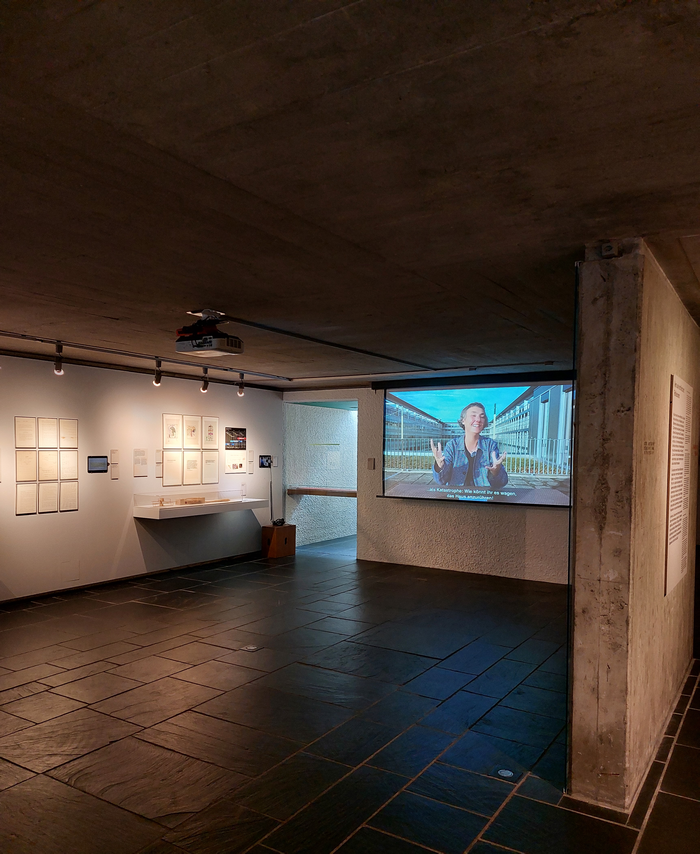
A questioning of the path architecture has taken since the 1920s, the role and function Vers une architecture has played on that path and the role it could have, ¿should have?, played, very much inherent in Vers une architecture in Teaching, a presentation of results from a multi-participant project exploring how Vers une architecture has been employed, directly and indirectly, in context of the teaching of architecture at the ETH Zürich since the 1950s. Reflections on Vers une architecture in (formal) Teaching that can also be extrapolated as reflections on Vers une architecture in (informal) Teaching. And in conditioning. Formal and informal.
A presentation which features contexts as varied as, and amongst others, former Le Corbusier employee Bernhard Hoesli's, by all accounts, relatively direct, uncritical, use of Vers une architecture as the basis of his teaching of the first year Architectural Design course at the ETH between 1958 and 1983; Aldo Rossi's tenure in 1972 as Guest Professor at the ETH and his use of Vers une architecture as a work extolling both positive and negative positions on and approaches to architecture, as a basis for argumentation rather than instruction; or, and returning to the first year Architectural Design course at the ETH, Marc Angélil's use between 1996 and 2009 of the art of Tango as a basis for researching space in context of Vers une architecture.
Tango that not only recalls the Dalcroze eurhythmics, the rhythmic gymnastics, that, as discussed in context of the aforementioned Radio smow Le Corbusier playlist, Le Corbusier's brother Albert was an activist protagonist and proponent of, and which Le Corbusier himself, apparently, practised for several years, which is an eternally fascinating image to play with, but also Tango, that recalls Le Corbusier's demand in Vers une architecture that "L'architecture, c'est quand il y a émotion poétique", 'architecture is when there is poetic emotion'.
The purely utilitarian is but construction.
Or a listless xerox of an early 20th century white cube.
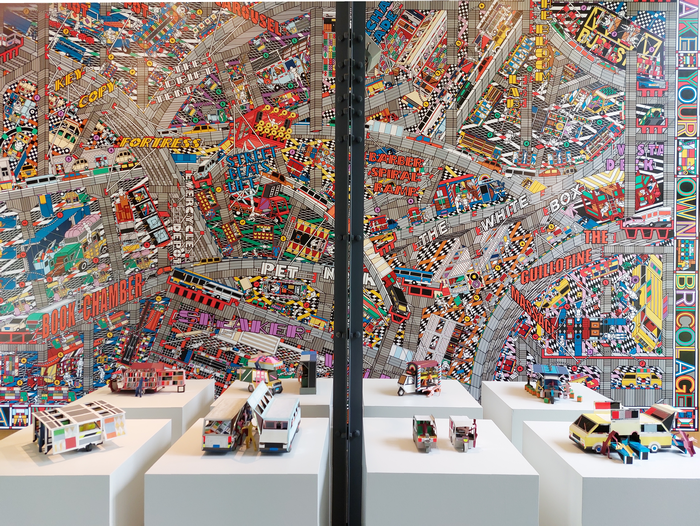
And movement as a component of architecture that is, arguably, also at the core of both No bee-bee-beeps by Lausanne based studio detritus together with Biel/Bienne based graphic designer Lou Rais, and A Machine is a House for Making a Living by Beijing based collective Drawing Architecture Studio.
A Machine is a House for Making a Living as a reformulating of Le Corbusier's famed opinion, also proclaimed in Vers une architecture, that a house is a "machine à habiter", a 'living machine', in context of contemporary urban environments where rising prices, and, we'd argue, a lack of suitable, flexible, responsive, spaces, means increasing numbers of businesses are not only mobile, but based in vehicles. A reality that, reading (perhaps incorrectly) between the lines, we feel Drawing Architecture Studio believe will become more prevalent than it currently is. Vehicles as business premises that, so Drawing Architecture Studio's actual argument, not only blur the borders between the permanent and the transient, and that, we'd add, in a digital world that fundamentally questions such a border, but also becomes an architecture they weren't designed as, being as they are engineering. Thereby, amongst the many other reflections enabled, allowing for reflections on a Le Corbusier's position on "Esthétique de l'ingénieur, Architecture, deux choses solidaires, consécutives, l'une en plein épanouissement, l'autre en pénible régression", 'engineer's aesthetics, architecture, two things that are interdependent, consecutive, one in full bloom, the other in painful regression'.
Which was which? Which is which? Why is that comparison possible?
No bee-bee-beeps an interactive pop-up, fold-out, move-with book that instigates a series of physical interventions that encourage, demand, force, one to engage differently with Pavillon Le Corbusier than you otherwise would, and thereby to engage with the theory and practice that underlies Pavillon Le Corbusier differently than you otherwise would; to engage with a constructions by Le Corbusier differently than you otherwise would. With the new insights such brings forth.
And while No bee-bee-beeps may not demand you Tango while engaging with Pavillon Le Corbusier, if you feel the need... Why not?
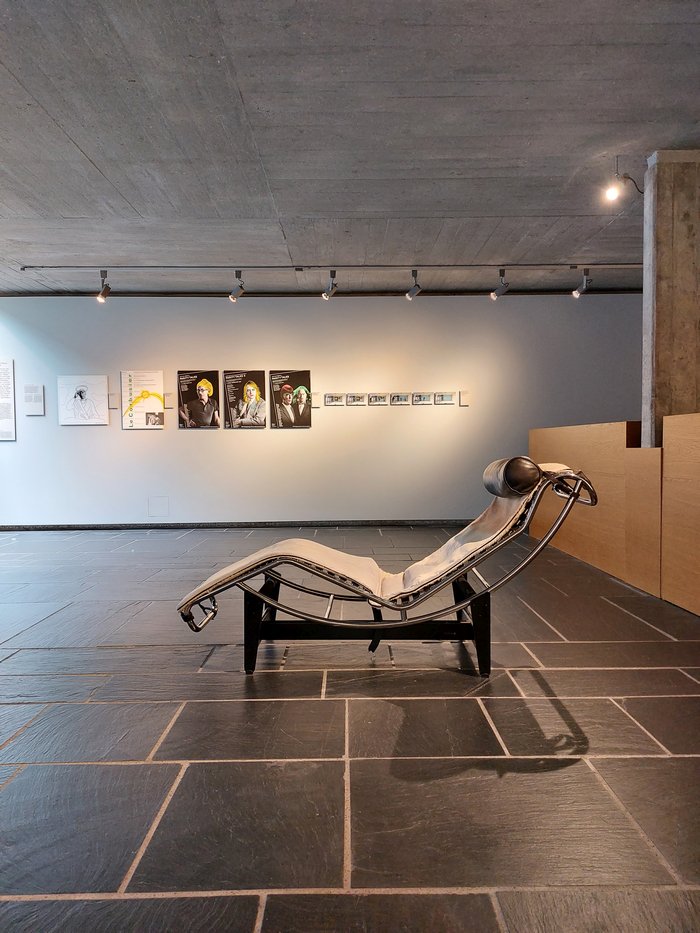
And an invitation to engage differently with the Pavillon Le Corbusier than you perhaps otherwise would that tends to reinforce a central invitation inherent in Reflections: to engage differently with Vers une architecture that you otherwise would, than you otherwise do. To reflect differently on Vers une architecture. To reflect differently on the relationships between humans, human society and architecture at the core of Vers une architecture. And to differently question contemporary relationships between humans, human society and architecture.
Something inherent in Limbo Accra a.k.a Dominique Petit-Frère and Emil Grip's contribution to Reflections: Who Are You Building For?
A question posed via videos of unfinished buildings, of abandoned building projects, across Africa that not only questions the motivations and impetuses of contemporary construction programmes, questions the structures and systems that enable and empower contemporary construction programmes, but also allows for differentiated perspectives on the industrial construction methods Le Corbusier argues for as a solution to contemporary early 20th century malaises in Vers une architecture: "Il faut créer l'état d'esprit de la série" he demands, 'We must create a mass-production mindset:'
'The mindset of building mass-produced houses, The mindset of living in mass-produced houses, The mindset of designing mass-produced houses.'
"Les chantiers seront-ils bientôt des usines?", he asks, 'Will construction sites soon become factories?' Le Corbusier believes so, "on parle de maisons qu'on coule par le haut avec du béton liquide, en un jour, comme on remplirait une bouteille", 'there's talk of houses being poured from the top with liquid concrete, in one day, like filling a bottle.'
A "bouteille" which very naturally reminds of the "Poème électronique avec la bouteille qui contiendra"3, the 'Poème électronique with the bottle to contain it' Le Corbusier promised Dutch electronic consumer goods conglomerate Phillips for the 1958 World's Fair in Brussels. A "bouteille" which Le Corbusier's, then, assistant Iannis Xenakis developed. Not that Le Corbusier would ever voluntarily admit Xenakis's role in the Philip's Pavillion any more than he would Amedeé Ozenfant's role in Vers une architecture.
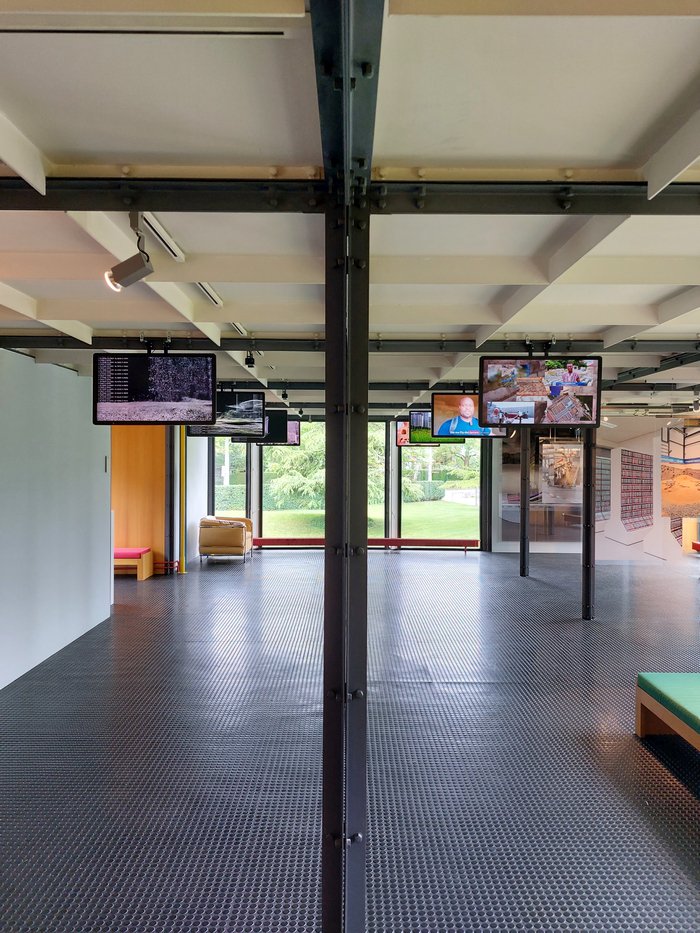
Mass-produced housing which on the one hand, an argument can be made is, more or less, what enabled the half-finished ruins presented by Limbo Accra; that with conventional construction methods they wouldn't exist as half-finished ruins. Reflections on solutions to contemporary early 20th century malaises as sources of contemporary early 21st century malaises, as architecture as a half-finished ruin, that is clearly instructive across a wide range of contemporary and future contexts.
And on the other poses important questions of a coming reality in which 3D printing could, we'd argue must, play an increasing role in the construction industry. A 3D printing of buildings that can, could, greatly improve the provision of constructions of all sorts; but that, as the path of (hi)story, as the path vers l'architecture actuelle, demonstrates, could bring us a whole heap of new problems.
Thereby underscoring the responsibility of those who build.
¿Who Are You Building For?
¿Really?
¿And who have you been building for since 1923?
¿Really?
¿You sure about that?
Questions the also reinforce the responsibility of those for whom those who build (allegedly, purportedly) build not to leave it all up to them, but to demand a role in the process.
The responsibility of us all to be active in, to accept our responsibility in, the processes vers une architecture.
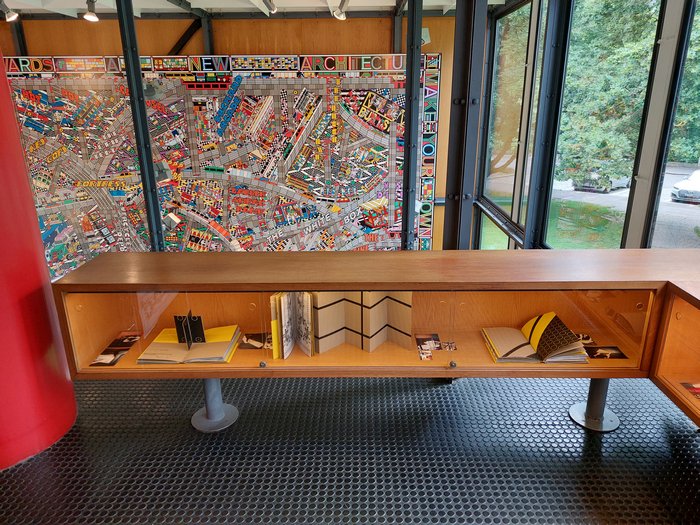
A presentation for both those familiar with Vers une architecture and those being exposed to it for the first time, Reflections presents a wide range of themes via an array of media in a presentation that, despite its intrinsic variety, and the complexity of much of the subject material therein, is effortlessly easy to view and engage with, regardless of whether you view it as long-term reader of Vers une architecture or someone for whom it is a new discovery. Which is a neat trick.
A presentation that for all it would be impossible without Le Corbusier, largely ignores Le Corbusier; concentrates instead on questions of architecture, construction, urban planning, society, civilisation, starting from a Le Corbusier who only very rarely comes to word himself. Which is also a neat trick.
And also a reminder that co-curator Beatriz Colomina was, in all probability still is, one of the harshest, more uncompromising, most entertaining, articulate, critics of Le Corbusier in context of his occupation of Eileen Gray's E 1027, Le Corbusier's occupation of Eileen Gray.4 A denunciation of Le Corbusier that doesn't stop Colomina co-curating a very open and fair and though-provoking critical appraisal of Vers une architecture. Which is less a neat trick as a reminder of the role of the curator and the critic. Of the necessity of an impartial, objective observer; of an impartial, objective observation, regardless of the wider contexts.
A critical appraisal of Vers une architecture that while, we'd argue, it at no point rejects that which Le Corbusier wrote, argued, demanded, does very much remind that he did so over a century ago.
¿Which means for the validity of the arguments, demands contained in Vers une architecture?
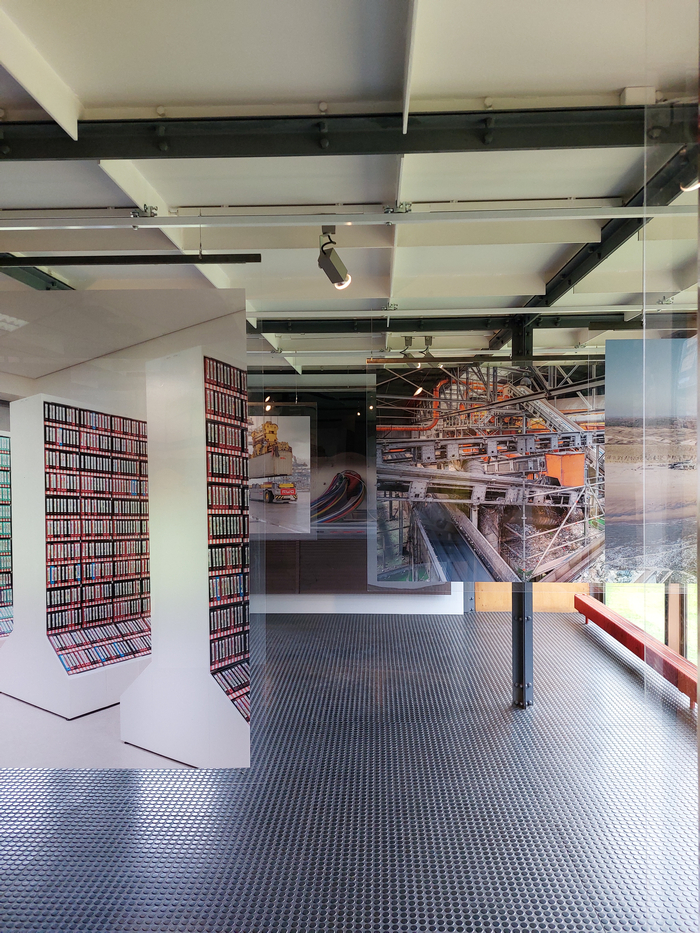
As Reflections helps elucidate, answering that question requires not only freeing Vers une architecture from its reading as an (hi)storical work, but requires freeing Le Corbusier from the tired, cliched imagery and associations that surround him. Means we all need to stop viewing Le Corbusier through the tired, sad, round glasses he is popularly viewed through.
But primarily demands we stop reading Vers une architecture with a definition of "architecture" as it existed in 1923. As Le Corbusier would have understood it and employed it. In the intervening century, Reflections convincingly argues, "architecture" has become something very different, much broader, more complex than it was in 1923.
Not only the technological, material, ecological, economic, et al realities in which architecture is realised, stands in discourse with, have fundamentally changed, but, whereas in 1923 architecture was still the work of the sole genius, today, and despite our insistence on, our near pathological, worshipping at the alter of 'star' architects, of unquestioningly believing the disingenuous storytelling of 'star' architects, there is a much wider appreciation that architecture is a collective social task, is a component of democracy not the perpetuator of autocracy it long was: "Mais les hommes vivent dans de vieilles maisons et ils n'ont pas encore songé à se construire des maisons", 'but men live in old houses and they haven't yet thought of building homes'.
Vers une architecture was, one can argue, Le Corbusier's (and Amedeé Ozenfant's) reflections on those homes that needed to be built. On the relationships between humans, humans society and architecture that needed to be built, needed to be given a physical expression and response.
Reflections that have popularly become arguments pour une architecture not vers une architecture.
Vers une architecture: Reflections is an entertaining and engaging space in which to begin to appreciate the difference, to appreciate the disservice inherent in the skewing; and to begin to learn to read Vers une architecture in the 2020s.
To read Vers une architecture for a 2020s on their way (hopefully, if we all keep our fingers crossed) to a 2120s that will be as different from the 1920s and they were from the 1820s and they from the 1720s.
And thereby to more critically, less passively, reflect on not only Vers une architecture as a component of contemporary architecture, contemporary architecture discourses, but also to more critically, less passively, reflect on Le Corbusier as a component of contemporary architecture, contemporary architecture discourses.
Vers une architecture: Reflections is scheduled to run at Pavillon Le Corbusier, Höschgasse 8, 8008 Zurich until Sunday November 23rd
Full details can be found at https://museum-gestaltung.ch
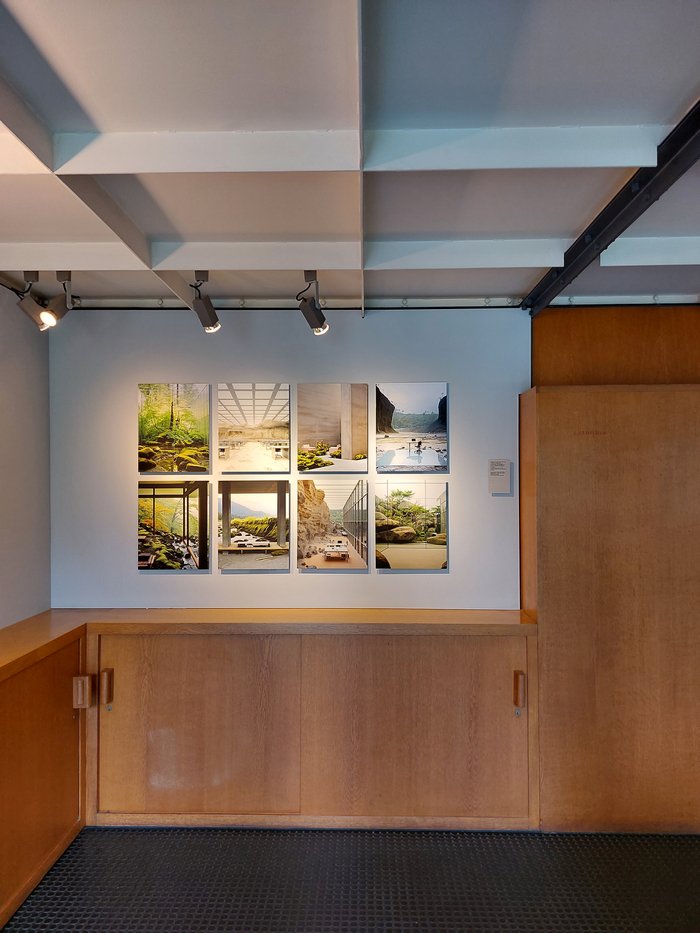
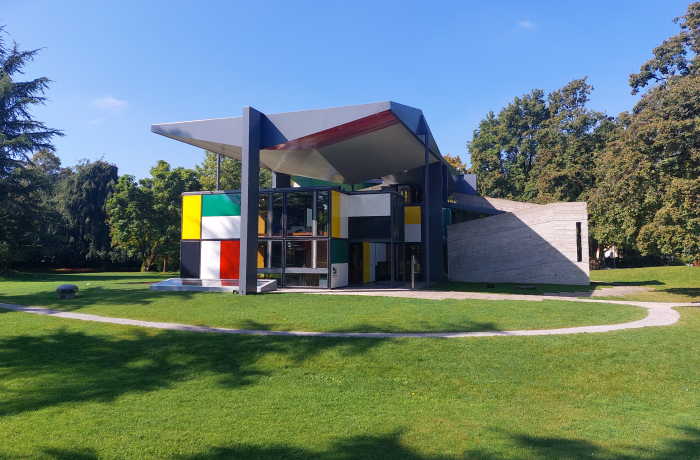
1and all other quotes unless otherwise stated, Le Corbusier, Vers une architecture, 2nd Edition, Les Éditions G. Crès et cie, Paris, 1925
2We're struggling to date when René Magritte first publicaly presented Ceci n'est pas une pipe. The image referred to was employed by Le Corbusier during a lecture tour through Argentina in autumn/winter 1929/30, so we're assuming he would have been familiar with Magritte's 1929 (non) pipe by that stage. But he might not have been, it may be pure coincidence.
3Le Corbusier in a letter to Fernand Ouellette, quoted in Peter Bienz, Le Corbusier und die Musik, Bauwelt Fundamente 120, Vieweg, 1999
4see, Beatriz Colomina, War on Architecture: E.1027, Assemblage, April 1993, No. 20, MIT Press